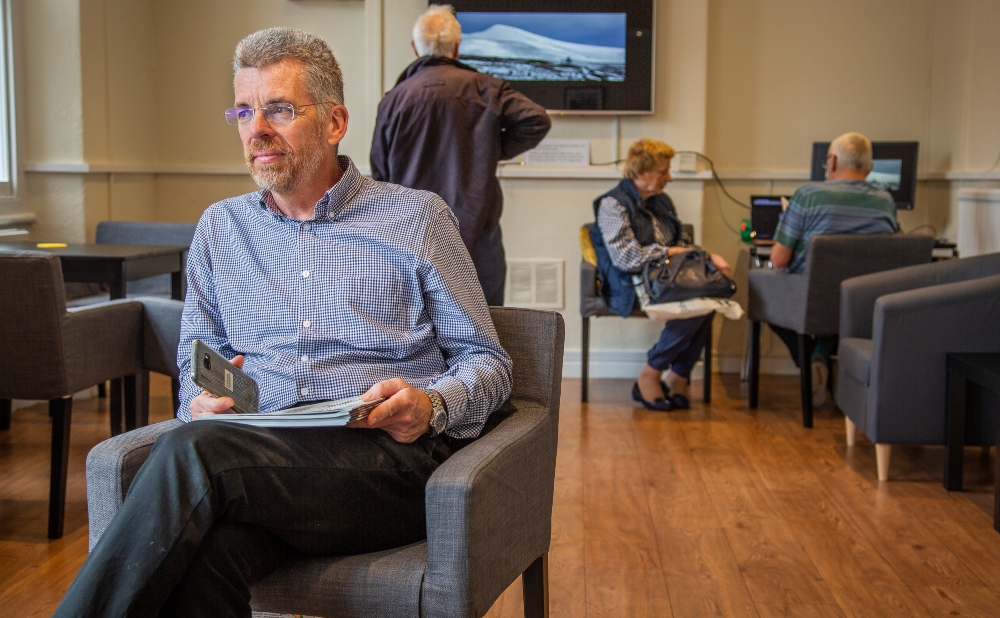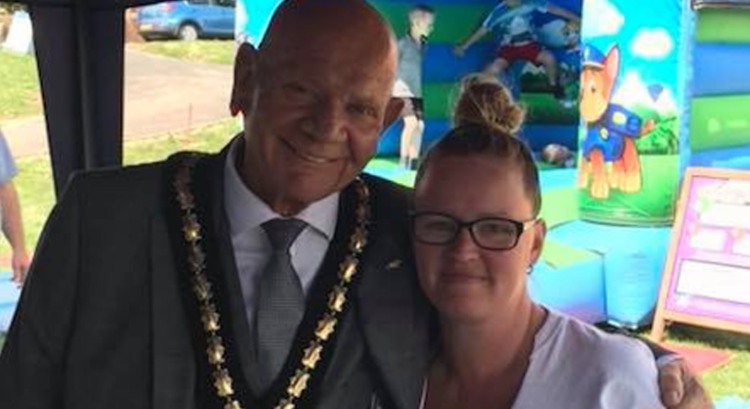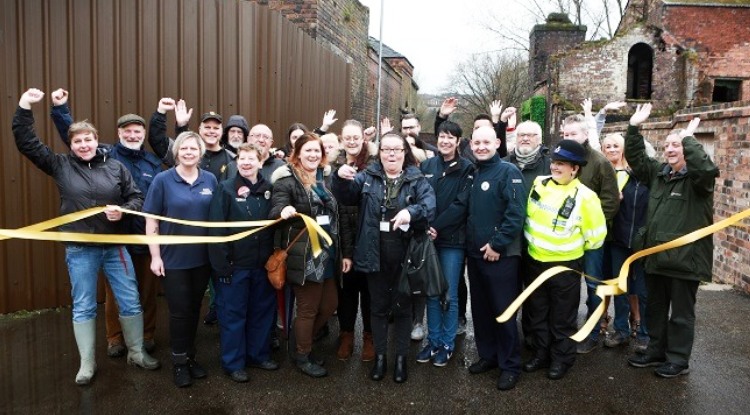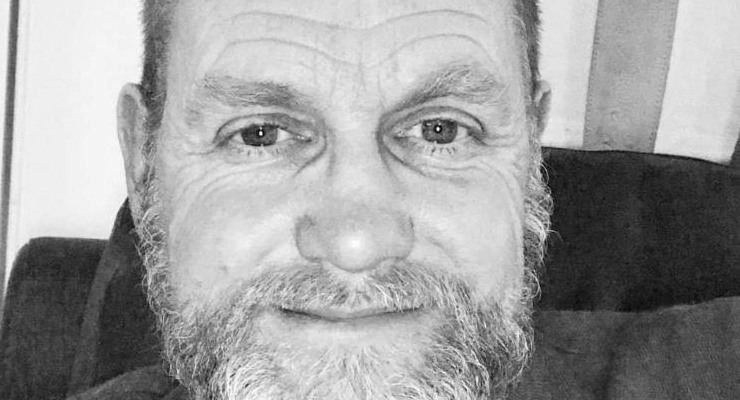Peckham
“I’ve never actually had a conversation with Malcolm about why he picked Nailsea,” says Ian. At the back of Malcolm’s mind was the Peckham experiment in the 1930s.
“He was thinking of community venues that are not medical centres, they’re not primary care clinics. They’re places where things can be done around health and well being that are outside of a medical setting.”
That way of thinking was nothing new for Malcolm, who has had a remarkable career as a GP, people connector and health creator. It struck a chord with Ian, who had been in health, both home and abroad, before local government.
“I got ideas in terms of what I felt the town council could get involved in,” says Ian. Cue Heather Eardley, who was a project manager with the Patients Association (Malcolm was an ambassador for them), and the work on Nailsea Place, which was to become the proposal for No 65, was born.
Venue
“The big task then was to find a venue that was going to be suitable to implement what it was we needed, because the location is absolutely crucial,” says Ian.
“The typical council or NHS model is to use existing premises, which may, in terms of the community perception, have a particular label attached to them. And they’re often not in the right locations.”
They were convinced it had to be on the high street.
“There’s no point in going into someplace that’s away from the main heart of the high street,” says Ian.
The whole process took three years.
Master plan
“Fundamental to the ethos is not having a master plan for what we were trying to do,” says Ian.
“Because we would just be repeating what all statutory bodies do, which is create a plan based on what they think they know the local community needs – the classic deficits analysis of what doesn’t exist – and then trying to fill that gap. We were very much of a different ethos, which is trying to understand what stakeholders in the community wanted from this venue,” he says.
This property-investing, behaviour-flipping approach sounds easy, but at times it was tough going. To back it up, Ian had a track record as town clerk. Initially, they had funds from the NHS to help people with digital technology. Then it was down to Ian to energise local organisations to use 65.
“For the first 12 months I didn’t think it would work,” he admits. “It was only at the start of year two that stuff started to happen. Then I realised that trust was the top and bottom of the enterprise.”
If people were going to change what they were doing, they needed to believe that No 65 was going to be there for the long term – why else would they invest their emotional energy?
Trusted relationships
“‘Pilot-itis’ is one of the great banes of everybody’s life – you get funding for a 12-month or 18-month project, and that doesn’t even get you to the starting line,” says Ian. For something like this, you need a good three years of money. “In year two people realised that we weren’t a fly-by-night, and the flood gates opened – based on the work that had been done in the previous years and the relationships we’d built over time.
“It’s about trusted partnerships and relationships. It is not about contracts. It’s not about commissioning. It’s not about service level agreements. 65 works because it’s specific to Nailsea. The principles of 65, and what’s worked and what wouldn’t work, are completely transferable.”
It follows the idea that the principles are transferable, but practices are local.
“Unless it’s driven by local people with local priorities, whatever they happen to be, then it won’t work, it will be another one of these imposed external agency jobs,” says Ian.
“I use an expression of Get Less Organised,” says Ian. “The reason for that is if you think you know the answers to things you’ve just missed an opportunity to listen.”
Locally-focused
Ian thinks parish councils should be at the forefront of this locally-focused, locally-listened approach.
“No 65 is one of these great places where people connect with each other. Where things can happen which cannot happen in any other setting. They’re definitely not going to happen in a medical setting. You need to have a place where people don’t need permission to come in and sit down,” he says.
Of course, not having a plan doesn’t mean you’re reckless. Clearly, you’re not careless with money and people have to trust what you’re doing. Equally, it can’t be driven by personalities. Leadership is dispersed rather than charismatic
“I’m not involved in the day-to-day running of 65. That’s by design,” says Ian.
Now No 65 is described as a triumph by residents and is part of the fabric of the town. A lot of that is down to the location and the ‘branding’, or rather, lack of branding, attached to it.
A triumph
“No 65, has got a different personality from any other venue, and by financing No 65, the town council is effectively recirculating money and giving a home to community organisations.
“We wanted this completely neutral sense of what 65 is, and what it isn’t. When I’m talking to other organisations who are interested in creating something like 65, they totally get that you’re creating a problem for yourself by slapping a label on the building. Because you’ve made that first project mistake, which is, ‘we know best, because we know what to call this building’. Don’t call it anything, and then see what happens.
The idea is so effective a food charity that began at No 65, and moved out when they got too big, has also taken the number-as-name approach.
This all flies in the face of conventional thinking: you must have a plan; you must call it something; you must know how much money you’re going to generate; you must know what your outcomes are.
“No, don’t do any of those things. It will be fine. Implement the principles and trust the process,” says Ian.
You won’t be surprised at Ian’s advice on how to create an inviting atmosphere.
“You get people in, and you talk to them like ordinary human beings. If they want, they’ll come in and see Citizens Advice, or a mental health group, or cancer cafe, or an art exhibition or just for a sit-down
Shop window
“One of the huge advantages is it’s got a shop window. So people are intrigued and go in and check out what’s going on. You don’t need permission to go into a shop.”
It all seems so positive, what is it that makes Ian smile?
“What makes me smile is all the smiling,” he says, smiling.
“When we first had the cancer cafe, it was set up by somebody who was still going through cancer treatment herself, but the atmosphere when people are together is uplifting not gloomy.
Uplifting
“I’ve seen people walk in and speak to somebody from Citizens Advice, and when they walk out, you can see that a burden has dropped away from them.
“It has to be enjoyable,” says Ian. “There is serious stuff going on but why would people come in there if there wasn’t a nice atmosphere?”




